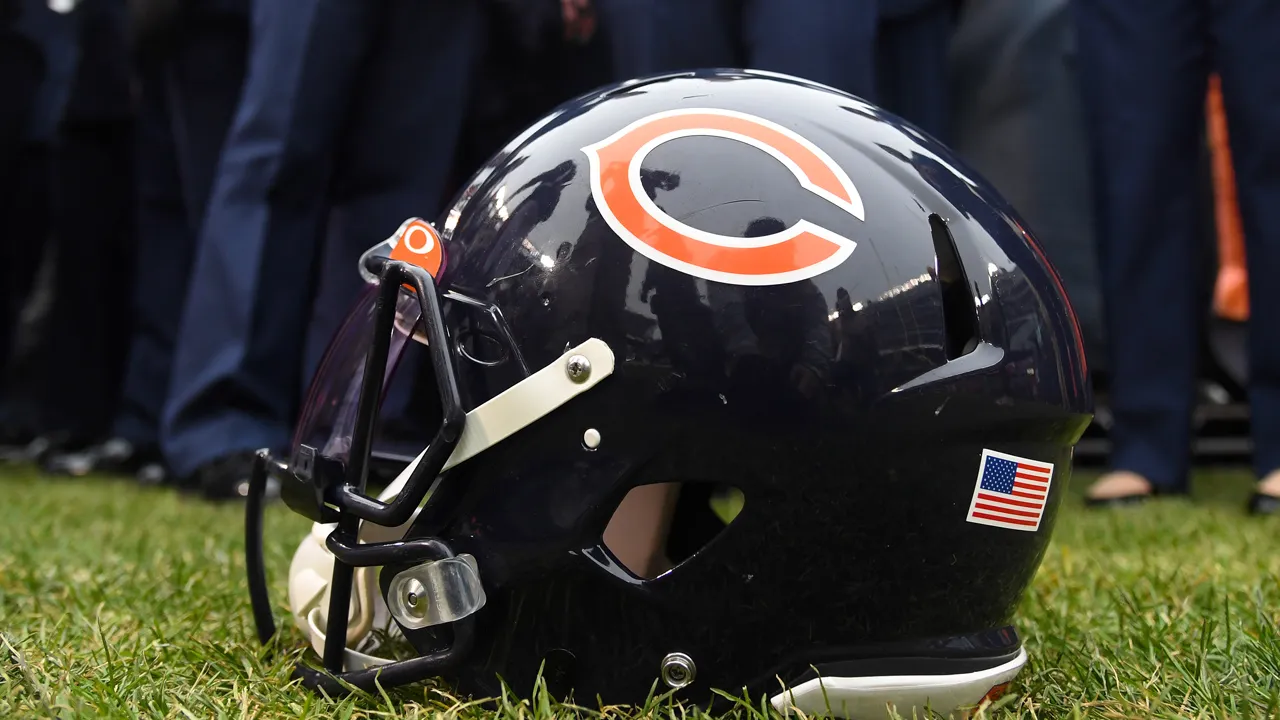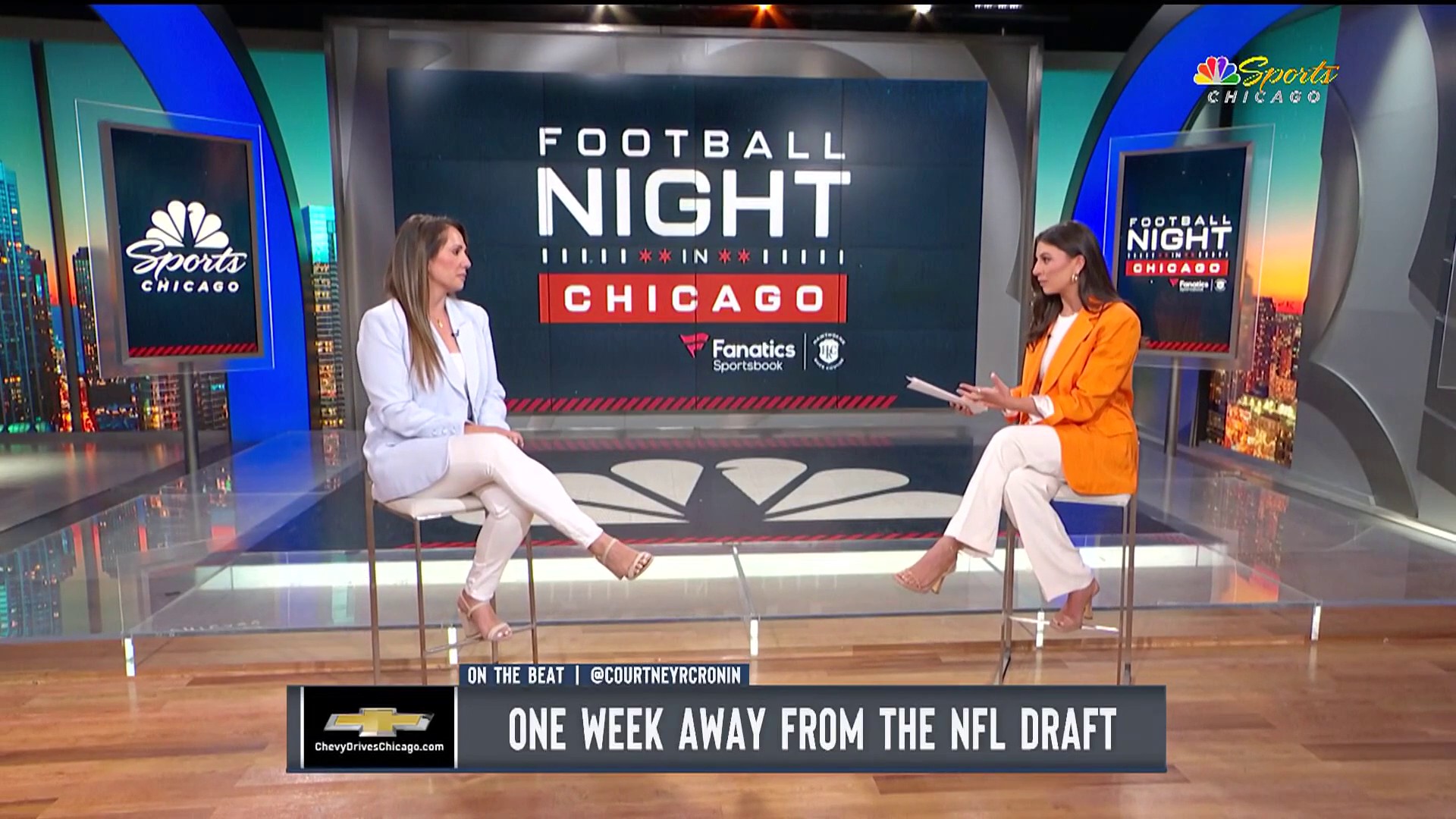On his own, Khalil Mack is one of the best players in the NFL. No player in the last three years has pressured quarterbacks more than Mack, whose 257 total pressures (per PFF) rank ahead of the likes of Aaron Donald and Von Miller — the two previously highest-paid defensive players in NFL history. There’s no question his individual influence will have a tremendous impact on the success of Vic Fangio’s defense in 2018.
But Mack’s impact will permeate the rest of the Bears’ defense. It’s not just how he impacts the game; it’s how he impacts the other 10 guys on the field with him. That total, complete impact is why Ryan Pace traded two first-round picks for Mack, and then signed him to a record-breaking contract extension.
Front seven
Stay in the game with the latest updates on your beloved Chicago sports teams! Sign up here for our All Access Daily newsletter.
We’ll let Akiem Hicks’ GIF work do the talking:
In non-animated form, this is what Hicks said his reaction was when he heard about the Mack trade: “One on ones. I get a lot more one on ones.”
Hicks led the Bears with 8 1/2 sacks last year, and as a result became targeted in opposing offensive coordinators' gameplans. The result was an increasing number of double teams — especially after Leonard Floyd’s season-ending injury in Week 11 — as opponents worked to make sure Hicks wasn't the guy to beat them. Of Hicks’ 49 total pressures in 2017, 29 came in the first eight games; seven of his nine sacks came in the first half, too.
NFL
Opposing offenses will now have to pick their poison between double-teaming Mack or Hicks. On some plays, they could theoretically double both, but if Mack and Hicks are lined up on the same side of the field that could be a boon for Floyd and whoever’s at defensive end, be it Jonathan Bullard or Roy Robertson-Harris. Nickel corner Bryce Callahan has shown a bit of pass-rushing skill, too.
“Akiem was getting the double teams,” cornerback Prince Amukamara said. “Now I’m sure it’s going to open Akiem up. It’s going to open Floyd up.”
So the prospect of more single blocks for Hicks and Floyd to work against is tantalizing. And don’t discount what Roquan Smith can do as a pass-rusher, too: He had 6 1/2 sacks last year with Georgia, and his speed and instincts could make him an intriguing pass-rushing option up the middle behind Hicks and nose tackle Eddie Goldman.
But on top of all this: it’s not like committing multiple blockers to Mack has stopped him before.
“He’s going to get to the quarterback regardless, in my opinion,” Robertson-Harris said.
Secondary
Amukamara raised some eyebrows in training camp when he said his goal for 2018 was to pick off 10 passes — this from a guy who hasn’t had an interception since Sept. 24, 2015. The Bears’ defense as a whole hasn’t intercepted more than eight passes since the 2014 season.
“This is a joke, this is a disclaimer,” Amukamara said, “but those 10 picks are looking a little bit more promising.”
Generating takeaways has been an emphasis to this group from Fangio and defensive backs coach Ed Donatell. The continuity established by re-signing cornerbacks Amukamara and Kyle Fuller is nice, as is the solid safety pairing of Eddie Jackson and Adrian Amos. But if this secondary is to improve, it starts with forcing more turnovers.
And Mack can play a role in that effort.
“The clock in the quarterback’s head is, I’m sure, going to be a lot shorter,” Amukamara said.
This is where pressures can help out the secondary. The more a quarterback is affected by Mack, Hicks, Floyd, etc., the more likely he is to make a mistake. That could be a throw that comes out too quickly, allowing a defensive back to jump the route and pick off the pass (which Fuller did in the Bears’ preseason game against the Cincinnati Bengals as a result of a Floyd pressure).
“It may not always be the sacks with Khalil,” coach Matt Nagy, a former quarterback, said. “But man, a lot of times, it's the QB hits and that rattles you more than a sack sometimes. Sometimes those QB hits can rattle you, and early on when you get those sacks, of you get those QB hits, it can affect the quarterback for the rest of the game.”
So what about the Raiders?
This all sounds encouraging, from Mack’s ability to free up Hicks and Floyd to his ability to force throws that could be picked off by Fuller, Amukamara, Callahan, Amos and Jackson. It's why Mack could be the guy to take the Bears from being a top-10 defense to being a top-five group.
But there is sort of an elephant in the room here: Why couldn't Mack make the Oakland Raiders' defense better?
Even with Mack playing nearly 90 percent of their snaps, the Raiders allowed on a per-game average the third-most points (25.1) over the last four years behind only the New Orleans Saints and Cleveland Browns. By a more advanced measure, the Raiders’ defense ranked 26th, 15th, 22nd and 29th in Football Outsiders’ DVOA from 2014-2017.
The counter-argument the Bears would offer is there’s more talent in place in Chicago than there was in Oakland. For comparison’s sake: PFF gave the Bears’ a 90.4 coverage grade in 2017, good for 10th in the NFL; the Raiders ranked 29th with a 59.8 grade. Quibble with the methodology of PFF’s grades all you want, that’s a significant gulf. The Bears ranked ninth in points allowed in 2017 while the Raiders were 20th.
So the optimistic thought here is that Mack can raise the level of play of solid-to-good players, not necessarily sub-optimal or "just a guy" types. That’s probably fair, and this Bears’ defense is full of solid-at-worst players atop its depth chart, at least on paper. Those are the kind of players that Mack can make better.
“He makes this defense just a little bit more ferocious,” Hicks said. “It's just — well, shoot, a lot of bit more ferocious. What was he? No. 1, 2, 3 in every stat for outside linebacker/defensive end in the league? He's just that player. And I think he's going to make us just that much more feared.”


